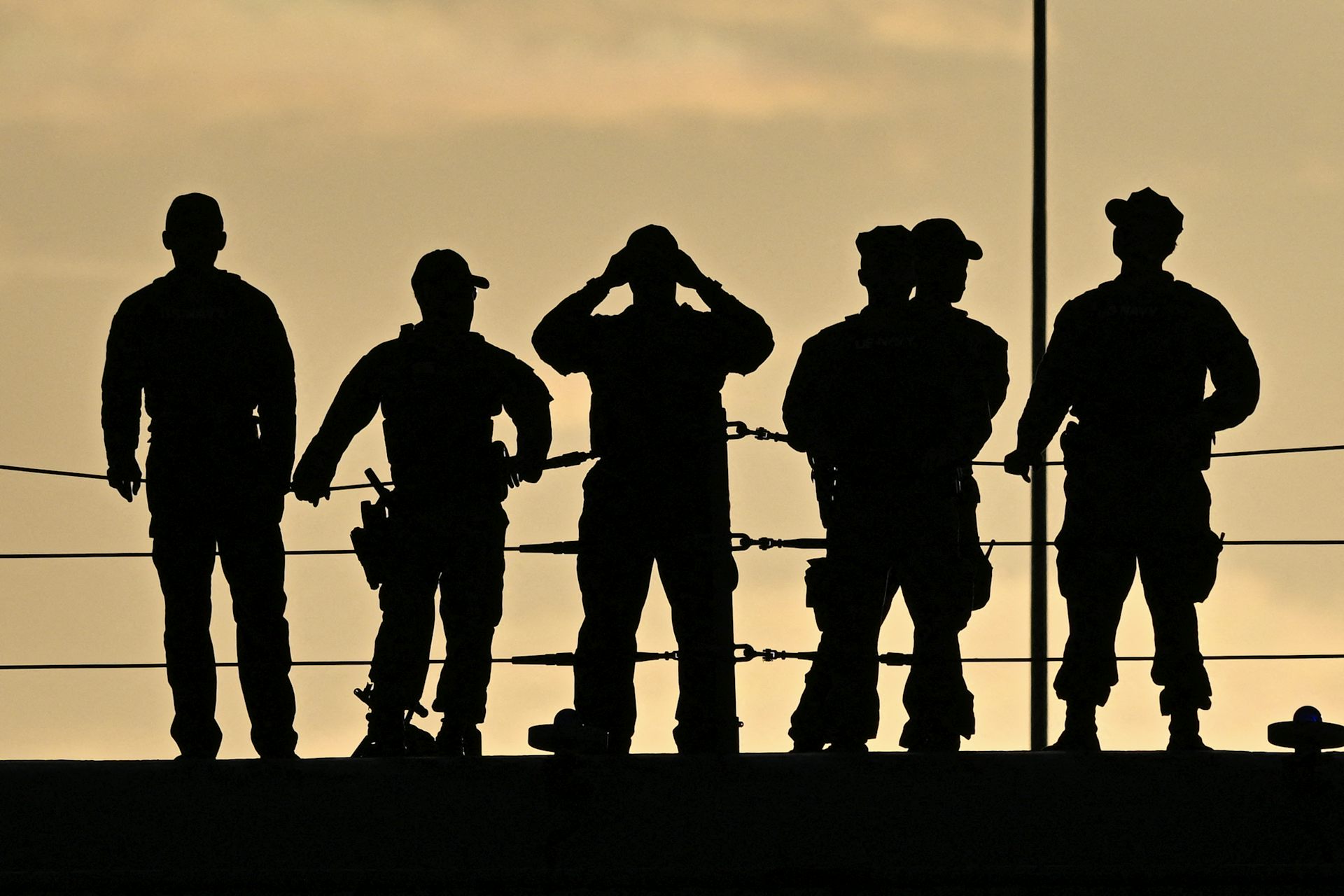Cholera fears rise following Atlantic hurricanes: Are we making any progress?
Surviving a hurricane in poor countries such as Haiti is no guarantee of surviving the secondary problem of cholera.
As hurricanes barrel through some of the most impoverished communities in the Western Hemisphere, and as floods ravage Yemen, Sierra Leone, Bangladesh and India, now is the time to rethink and prioritize cholera epidemic prevention and response.
In the aftermath of Hurricane Matthew in 2016, a surge of cholera in Haiti increased the death toll from the disease. Officials in Haiti this week are already urging people to add bleach to their drinking water to prevent the spread of cholera in the aftermath of Irma.
I am a medical anthropologist, and I’ve worked for over a decade in parts of the Horn of Africa regularly affected by outbreaks of cholera and other infectious diseases. I am concerned about cholera in the Caribbean in the aftermath of Irma and other hurricanes on the horizon. But there is some good news – if we take action.
Rare in wealthy nations, but too common in impoverished ones
Cholera is an infamous scourge, particularly in impoverished, flooded and war-torn areas. It causes a severe form of diarrhea and can quickly lead to death if left untreated.
In books detailing its historical and social significance and in recent media reports from Yemen, Sudan and Kenya, cholera is depicted as a symbol of savagery, state failure and filth. However, these portrayals and the sensationalism of cholera in our popular culture and news media obscure the fact that today, with concerted efforts, we can actually prevent, detect and stop its emergence and spread.
Cholera is caused by the ingestion of the bacterium Vibrio cholerae, which is often present in water or food that is contaminated with fecal matter. Cholera outbreaks occur when water pipes or sewage systems fail or do not exist at all, and where cholera already exists in the environment.
Epidemic outbreaks of cholera typically happen in impoverished countries also affected by conflict or disasters: Today this includes South Sudan, Sudan, Haiti, Kenya, all the countries in the Horn of Africa, Yemen and the Democratic Republic of Congo. In 2010 United Nations peacekeepers reintroduced cholera to Haiti during the disaster response there, subsequently killing over 10,000 people. And in just the last four months in Yemen, about 2,000 cholera deaths have been reported. Most of the people who die of cholera today are children.
Symptoms of cholera typically begin anywhere from two to five days after infection, but patients who are already malnourished or sick with other ailments can actually die within hours. Cholera is far more deadly than other diarrheal diseases, and it is not simply caused by people failing to properly wash their hands. It is a highly pathogenic, frightening, fast-moving, killer bacterium that can spread like wildfire in crisis-affected communities.
A case of denial?
To make matters worse, in recent years, due to the stigma of cholera and fears of its potential effects on tourism and trade, public health authorities in several countries have euphemistically classified suspected cholera cases as “acute watery diarrhea” or “AWD.” For example, this year, in the weeks preceding the election of the new director general of the World Health Organization, accusations surfaced that Dr. Tedros Adhanom Ghebreyesus, then a leading candidate for the position, repeatedly covered up cholera outbreaks in his home country. By not providing laboratory tests for suspected cholera cases, public health officials in Ethiopia and elsewhere have effectively hidden its emergence and spread.
But there is good news: Cholera is now more easily detectable, preventable and controllable than ever before.
Even in areas without adequate or functioning laboratories, a new Crystal VC dipstick rapid test can enable disease surveillance and provide early warning that an outbreak of cholera is unfolding. These rapid diagnostic tests were designed specifically for use in resource-constrained environments and humanitarian emergencies.
Plus, killed oral cholera vaccines (kOCVs) are now a proven tool for cholera prevention and control. Thanks to the vaccines’ efficacy and herd immunity, only two doses of kOCVs have an average of 76 percent effectiveness in outbreak situations, and can provide protection for at least three years, if not longer. Even just one dose of a kOCV can provide short-term protection, making it a practical option in outbreaks in which a rapid reduction in short-term risk is needed.
With these new and inexpensive technologies, we as a global health community should now work to realize the potential for cholera early interventions and outbreak prevention – even before floods, hurricanes, wars and other crises unfold. The World Health Organization has led the way in developing surveillance mechanisms and ready-to-go kits for first responders, but more must be done.
There are still far too few investments in infrastructure projects in the places at highest risk of cholera outbreaks. Cholera provides undeniable evidence of people’s longstanding – not just sudden – lack of clean water and sanitation facilities. Refugee camps and makeshift shelters are rarely only temporary habitations; people usually end up living there for years if not decades.
And WHO’s kits – while incredibly useful for aid workers – are designed to last for only the first month of a response. Cholera outbreaks will never cease if we focus only on technological fixes and temporary humanitarian solutions, and ignore the structural inequities that result in contaminated water sources and outbreaks of infectious diseases.
Cholera was a problem until the 19th century in impoverished and flood-prone parts of the southern United States. How was it finally eliminated in the places now ravaged by hurricanes Harvey and Irma? Only through hefty investments in water and sewage treatment systems.
Solutions are available
In the wake of the 2014 Ebola response and after much reflection, the WHO is attempting to cast itself as an organization that can prevent and identify outbreaks of disease as well as coordinate global epidemic responses. But the international community cannot simply wait for the next Ebola outbreak or ignore the existence of Vibrio cholerae in the world’s most vulnerable and disaster-affected communities.

This is the chance for the WHO to fulfill this mission and make right mistakes of the past. Cholera has been eliminated from disaster-affected Texas and Florida. The same can happen elsewhere too. Thousands of lives are at stake.
The WHO and its partners should lead a vigorous appeal to donors and humanitarian organizations working in several locations – in the paths of Atlantic hurricanes, in flooded regions of South Asia, and in war-torn parts of the Middle East and Africa – where cholera still kills and the risk of an outbreak is high. The new director of the WHO, Dr. Tedros, is perfectly positioned to counter his recent detractors and demonstrate his capacity for swift action by mounting the WHO’s first coordinated, multi-country cholera epidemic response.
Lauren Carruth does not work for, consult, own shares in or receive funding from any company or organization that would benefit from this article, and has disclosed no relevant affiliations beyond the academic appointment above.
Read These Next
Deception and lies from the White House to justify a war in Venezuela? We’ve seen this movie before
Two US wars based on lies, in which tens of thousands of American troops and millions of civilians died,…
Miami’s new mayor faces a housing affordability crisis, city charter reform and a shrinking budget
Eileen Higgins won a hard-fought election to become Miami’s new mayor. Now for the hard part – governing…
Understanding climate change in America: Skepticism, dogmatism and personal experience
Real skeptics study the evidence and ask questions, rather than taking political dogma on faith. Experiencing…






